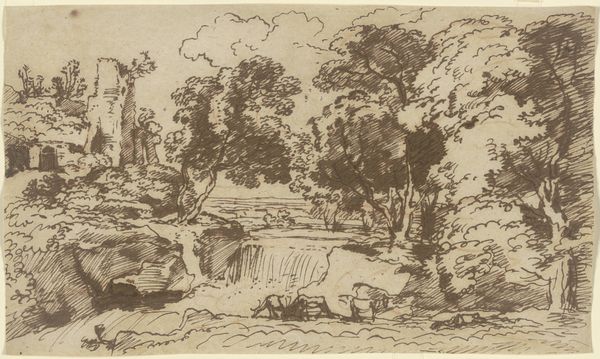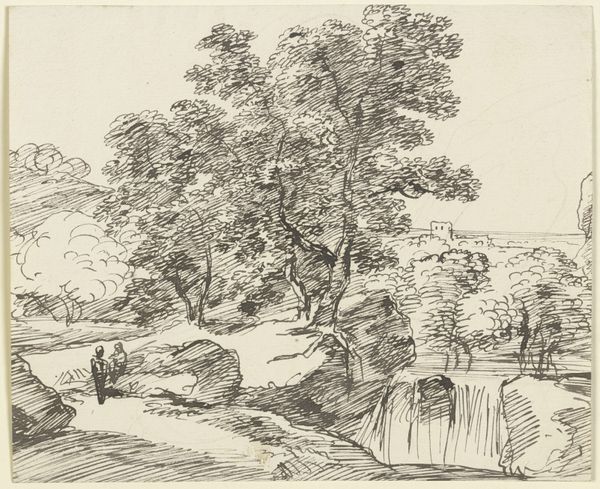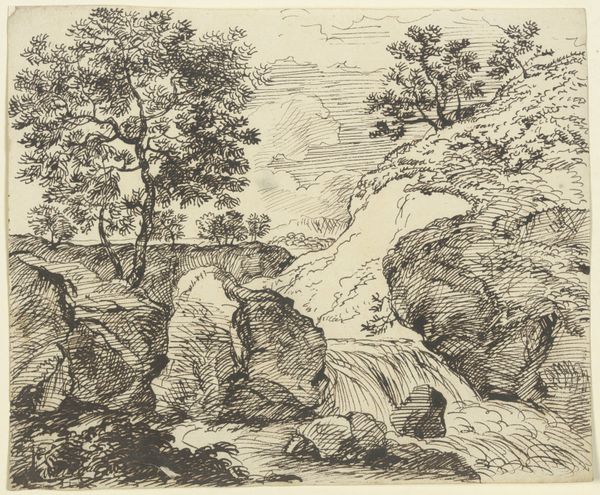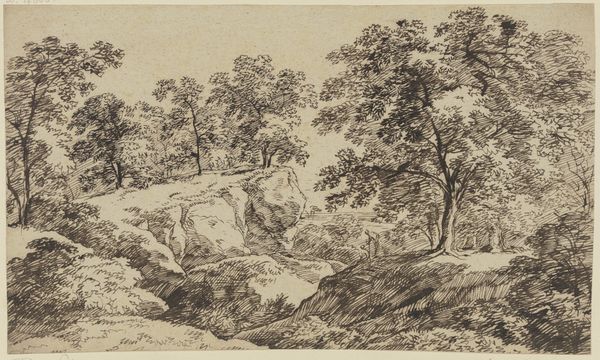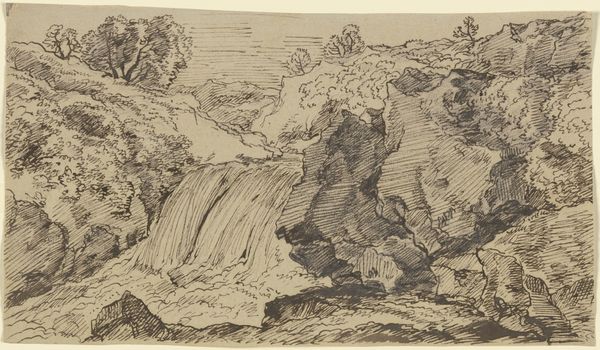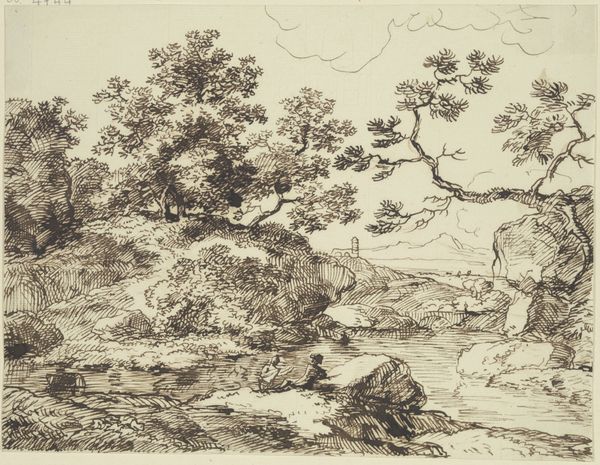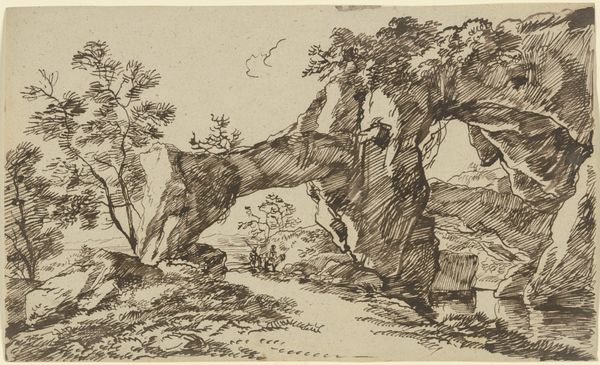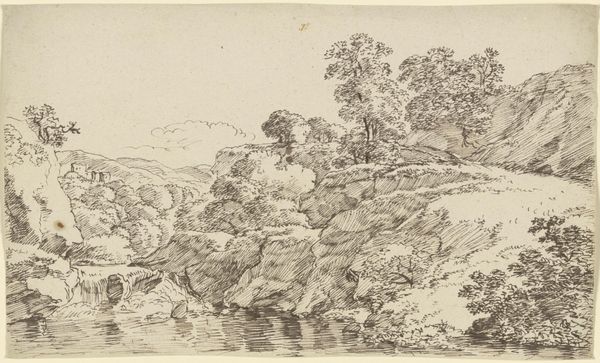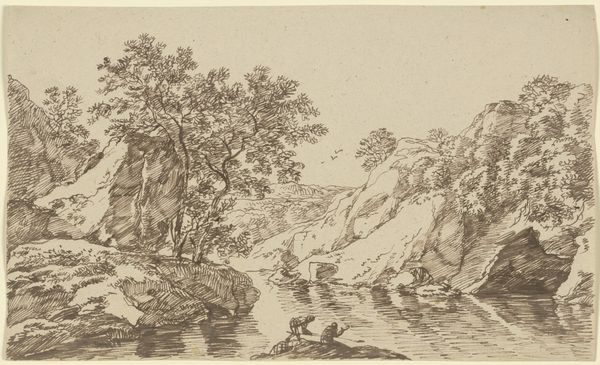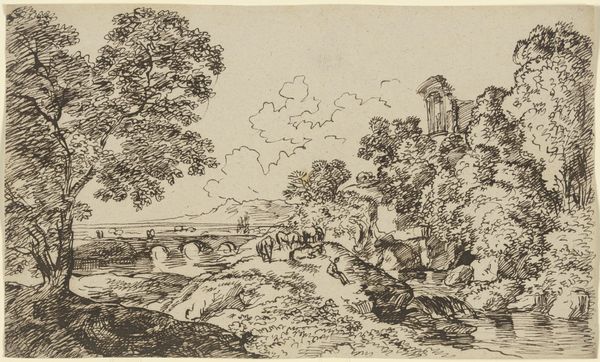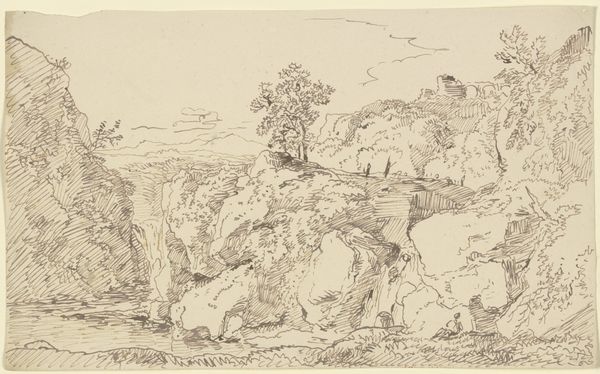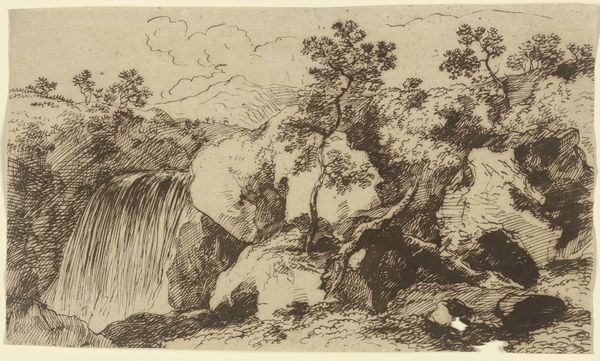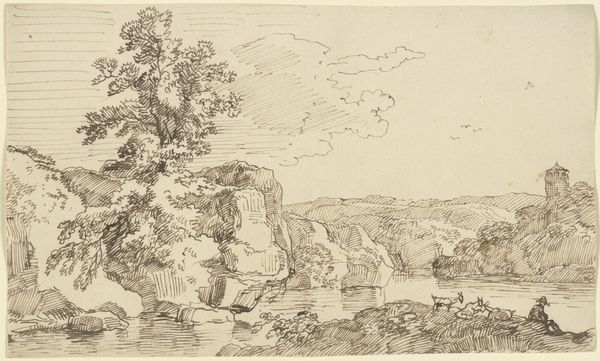
drawing, ink, pen
#
drawing
#
ink drawing
#
pen drawing
#
landscape
#
ink
#
line
#
pen
Copyright: Public Domain
Editor: This pen and ink drawing, titled "Wasserfall, im Vordergrund ein absterbender Baum"—Waterfall, with a Dying Tree in the Foreground—is by Franz Kobell. It's a very evocative scene; the delicate lines capture the movement of the water so well, but there's a melancholy feeling because of that withered tree. What stands out to you? Curator: I am immediately drawn to the binary Kobell presents. Water, a symbol of life and constant change, is juxtaposed with the dying tree, a symbol of decay and perhaps the end of a cycle. It reflects, perhaps unintentionally, on the tumultuous societal shifts happening during his lifetime. Do you think the inclusion of the dead tree is an explicit statement or more subtle commentary on power structures? Editor: That's a fascinating point! It could be a commentary, especially considering Kobell lived through periods of significant upheaval, with the French Revolution and the rise of Napoleon. But is it too simplistic to directly correlate the dying tree with societal decay? Perhaps it's about individual experiences of loss within those larger changes? Curator: It’s definitely multifaceted. Landscape art often serves as a coded language for broader social and political ideas. The Romantics who came after Kobell used it that way. What if the “naturalness” of the scene is intended to draw attention to the loss of traditional ways of living through industrial development? Do you feel the sublime qualities that were often tied to waterfalls invite reflection on this loss? Editor: I can definitely see the Romantic elements you're highlighting, especially that contrast between the awesome, powerful waterfall and the fragility of the dying tree. This tension creates that sense of the sublime. Curator: Precisely. Considering the economic hardships experienced by many during that time, it invites conversations about ecological fragility and the human cost of progress, that resonate today as well. Editor: Thinking about it now, seeing the contrast Kobell illustrates gives a new perspective and a far richer context to landscape art beyond just the literal presentation of nature. Curator: Absolutely! By examining artwork in relation to the societal climate in which they were produced, we can glean more insight into art and the historical narrative.
Comments
No comments
Be the first to comment and join the conversation on the ultimate creative platform.
